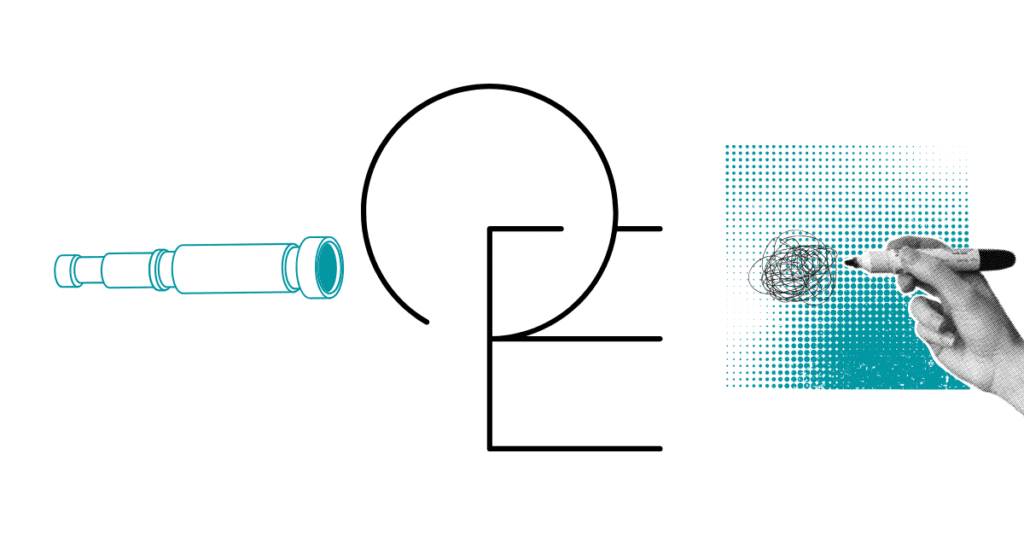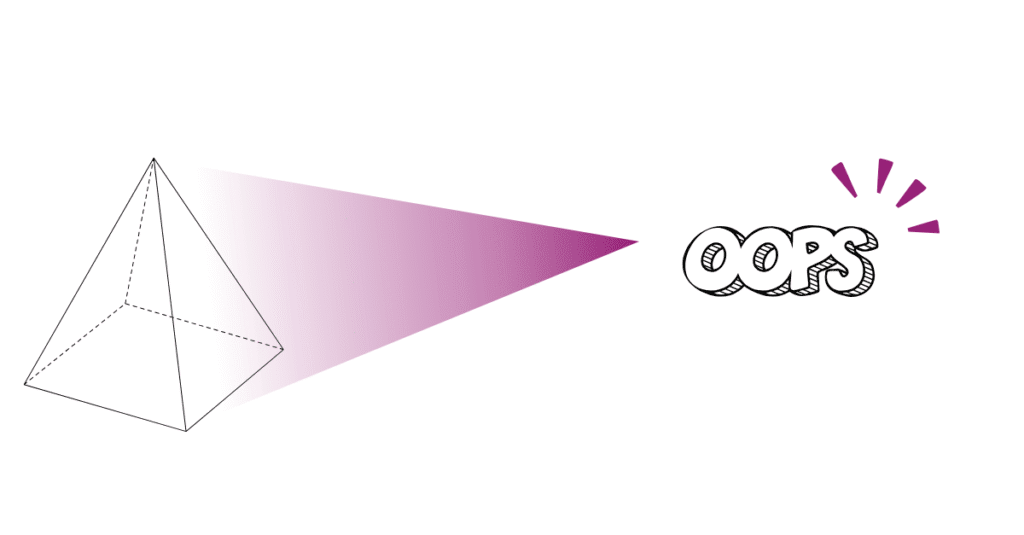Imagine you are building a house for yourself and the family. Would you accept that craftsmen pointlessly carry material around? That necessary tools are missing and a lot of time is wasted on manual labor and ‘work-arounds’? That pipes, cables or floors are laid, then torn out again and new ones are laid? That your house ends up costing 30% more and you have to organise further financing? That you can move in 1 year later than planned?
Companies do this every day.
When managers think about digitisation, the focus is often on efficiency: automating processes further, reducing time and costs, increasing quality. Within processes, data is collected, aggregated and analysed, decisions are prepared and changes are made to the process.
Everything follows a principle that Taiichi Ohno (1912-1990) introduced to the manufacturing world: achieve continuous improvements in the process, increase quality and eliminate waste. Ohno established Kaizen as a paradigm at Toyota, and today thinking in terms of efficiency and quality is the quasi-standard of process-driven companies – in other words, virtually all companies.
The focus is on reducing waste, and Ohno identified seven fields of waste:
Correction
Overproduction
Movements (Motion)
Material movement
Waiting times
Stocks (Inventory)
Processing
To this day, production companies are guided by these fields and do everything they can to avoid waste, thereby reducing costs and increasing quality. Thanks to digitisation, the Industrial Internet of Things and analytics, more data – and tools for analysing it – are available today than ever before. Interpreting digitisation as an efficiency driver therefore follows the same logic as the introduction of lean production or TQM in general. Eliminating waste has a direct impact on a company’s profit, so focusing on it makes sense.
Waste beyond production
The core processes of manufacturing companies today already provide countless data points that are used for optimisation, including logistics, warehouses, production, and even customer service. But what about beyond?
One of the principles Jeff Sutherland points to in his research on SCRUM is also waste reduction. Historically, software has been developed in classic waterfall fashion: Define requirements, develop, test, deliver; the whole thing was planned and accompanied with exuberant project management. However, the more complex software and projects became, the more often the finished product did not meet the original requirements, or these had changed dynamically during development.
Resources were thus wasted in the development process: intellectual effort, time, money. Developers ended up doing pointless work. Scrum changes that by relying on short, iterative sprints, high team autonomy, and maximum transparency. Scrum is a modern method for implementing projects in a customer-centric way and avoiding waste. It has now also become established outside of software projects.
Although methods such as Lean or SCRUM are known and applied everywhere today, a frighteningly high level of waste can still be found in organisations today. Intellectual capital is senselessly wasted. Two examples:
A. Production company
A manager has the task to look for savings potentials in a business unit and to make suggestions how the potential can be exploited. He forms an interdisciplinary team and evaluates concrete ideas. The team makes good progress, and several proposals are on the table after a few weeks. Now the madness begins: the ideas and proposals have to be presented to higher hierarchical levels so that decisions can be made there.
It takes weeks until the managers give feedback that more data is needed. Nobody decides, the team is now busy presenting ideas with more and more PowerPoint slides. The team leader is invited to board meetings to present – but he is not told what exactly the board wants to know. So he puts in further days of work with his team to prepare the ‘wrong’ information on suspicion and in the worst case.
The team members involved are intelligent engineers and business people, but they are incapable of action. They cannot contribute anything to concretely save costs, but waste their energy on countless pages of PowerPoint.
B. Financial services provider
In the second example, a young bank manager reports on his job: he has to gather market data, evaluate it, prepare it and then create reports for traders worldwide. So simplified, moving data from left to right. When asked if this process can’t be automated (Robotic Process Automation, Analytics) he says, “Theoretically yes, but practically impossible.”
He would need different members in a temporary team: the retailer as internal customers, IT specialists, experts in data, analytics, governance, an internal coach, etc.), and he even knows these colleagues personally. But they are all assigned to different departments, reporting to different supervisors. It is not possible to form an interdisciplinary team from this, which is allowed to invest 2-4 weeks of time – the hierarchical structures stand in the way.
Both exemplary cases show a paradox:
Waste of time or money could be avoided and quality increased – but traditional structures and bureaucracy prevent exactly that. Thus, not only are efficiency gains not realised (opportunity costs), but even intellectual capital is wasted. All of the employees mentioned are excellently educated, have master’s degrees in their pockets, a lot of experience and ideas, and (still) a high level of initiative and responsibility.
But they are forced to waste their resources. Instead of innovating and creating sustainable value for their company, they are condemned to hierarchy rituals and meaningless work. The paradox: both sides lose. How much longer can companies afford this?
So while some areas of the company are optimised to the decimal point, elsewhere they waste time, money, energy, ideas, initiative and, in the end, loyalty. People are frustrated because they cannot be effective. Might it be because this behavior seems ‘normal’ in traditional corporate cultures? Or that there are no measurable data points for intellectual work?
Organisations can no longer afford to waste intellectual capital. The danger is too great that new, unknown competitors with innovative business models, platforms, digital services will take over not only market share, but entire markets. In both industries mentioned above, these challengers already exist. In addition, employees will be less and less likely to accept meaningless work and instead look for new jobs.
New principles for leadership and collaboration
Now would be the time for companies to introduce new applications and analyse the work performance and value contribution of employees even deeper (keyword HR or workforce analytics). Collect and analyse more data around performance, satisfaction, communication and so on.
Or establish new principles: Employees know very well what hinders their performance and satisfaction. Where there is a lack of purpose. Where their effectiveness is limited. Leadership could focus awareness on this and work with teams to avoid waste:
Change structures – what (micro & macro) structures prevent self-efficacy, meaning and innovation?
Create transparency – is necessary information available to all employees at all times, or is information used as dominance knowledge?
Eliminate rules – much behavior in organisations is governed by rules; which of these are necessary, which are superfluous, which create waste? (See ‘Kill a stupid rule’ by Lisa Bodell, well described by HR Pioneers)
In our work around New Leadership, we have explored principles, competencies and methods that leadership will need to establish in the future. Here are a few of those principles:
Instead of ‘leaders are decision makers’
to ‘leadership creates the culture and structures for decision making (by teams)’
Instead of ‘uniformity promotes quick solutions’
to ‘diversity promotes sustainable solutions’
Instead of ‘leadership through strategy, hierarchy and plans’
to ‘leadership through purpose, networking and agility’
Instead of ‘departments are responsible for innovation’
to ’embed intrapreneurship in culture’
The beginning of change is when things come into awareness. So become aware that your company is wasting valuable resources every day. It’s no longer about raw materials or poor quality, but about the most valuable thing you own: intellectual capital.









